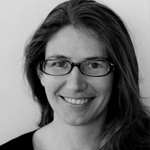Coupling Defect Centers in Diamond to Fabry-Perot Microcavities
Hosted By: Quantum Optical Science and Technology Technical Group
03 March 2021 12:00 - 13:00
Eastern Time (US & Canada) (UTC -05:00)Defect centers in diamond can offer atomic-like optical transitions and long-lived spin degrees of freedom. Integrating them into high quality optical resonators opens a route toward realizing a cavity quantum electrodynamics system combining atomic-like coherence with a robust solid-state platform.
While approaches based on diamond nanophotonics have been pursued for more than a decade, Fabry-Perot microcavities present a complementary approach that has recently received significant attention. In this webinar hosted by the OSA Quantum Optical Science and Technology Technical Group, Lilian Childress from McGill University will explore the potential benefits and challenges to open micro-cavities, examine progress toward coupling them to diamond defect centers, and discuss the development of an actively stabilized cryogenic system.
Subject Matter Level:
- Intermediate - Assumes basic knowledge of the topic
What You Will Learn:
- The motivation for coupling diamond defect centers to Fabry-Perot micro-cavities for quantum networking applications
- Approaches to realizing high finesse and tunable cavities in a cryogenic environment
Who Should Attend:
- Students and postdocs interested in learning more about NV devices
- Researchers working with high finesse Fabry-Perot cavities
About the Presenter: Lilian Childress, McGill University
 Lilian Childress is an associate professor and tier II Canada Research Chair in the physics department at McGill University. After completing her PhD at Harvard University in Prof. Lukin’s group in 2007, she was an assistant professor for 4 years at Bates College and a postdoc at Yale before joining McGill in 2013. Her research is at the intersection of atomic physics, quantum optics and condensed matter physics, aimed at using the quantum states of defect centres in crystalline materials for applications in quantum information and metrology. Her current work is focused on creating a spin-photon interface by integrating diamond defects into fiber-based micro-cavities and investigating dynamics of spin-transfer-driven nanomagnets using defect-based probes. Other recent interests include optimal qubit readout, charge state dynamics of defect centres, opto-mechanics with superfluid helium, and micro-cavity-enhanced sensing.
Lilian Childress is an associate professor and tier II Canada Research Chair in the physics department at McGill University. After completing her PhD at Harvard University in Prof. Lukin’s group in 2007, she was an assistant professor for 4 years at Bates College and a postdoc at Yale before joining McGill in 2013. Her research is at the intersection of atomic physics, quantum optics and condensed matter physics, aimed at using the quantum states of defect centres in crystalline materials for applications in quantum information and metrology. Her current work is focused on creating a spin-photon interface by integrating diamond defects into fiber-based micro-cavities and investigating dynamics of spin-transfer-driven nanomagnets using defect-based probes. Other recent interests include optimal qubit readout, charge state dynamics of defect centres, opto-mechanics with superfluid helium, and micro-cavity-enhanced sensing.
